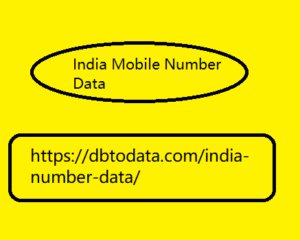Post by account_disabled on Mar 10, 2024 18:32:11 GMT 9.5
The market in which companies operate today is characterized by an increased consumer with complex and changing needs and by hypercompetition. This last concept should not make us think of a situation in which competitors are more numerous than in the past, but of a market characterized by intense and fast competitive actions, in which competitors must move quickly to build their own advantages and to affect those of the opponents (Richard D'Aveni, Hypercompetition, Simon & Schuster, 1994). Competitive escalation presents itself as a succession of waves increasingly closer together over time, made up of first increasing, then stable and then decreasing profits, deriving from the exploitation of a temporary competitive advantage. Here's the difference compared to the past: competitive advantages are no longer measured in years, but in months.
In this, technology, as a force of creative destruction, has its decisive role. Therefore, the company India Mobile Number Data that wants to stay on the crest of the wave must continually renew itself, always look for a new competitive advantage capable of surprising competitors, even when it means questioning the status quo, i.e. its current competitive advantage. A difficult task, especially for large organizations, because it means destroying what has been created in the past, with the hope of being able to generate new value. Marketing skills (from “Augmented Marketing”, 2021) In this complex market situation, companies are increasingly assigning marketing a greater role than in the past. Among the reasons: Marketing has a complete vision of the company : those who manage this functional area should have a broader knowledge of the company's business than finance, operations , product, sales or IT.

The reason is that the tasks of the Chief Marketing Officer include understanding the market, the competition (offers and companies), the partners, current and potential customers. This 360-degree vision is essential for making the most prudent choices or following the hypotheses most consistent with the company strategy. Think about the launch of the Sony Reader. It was the first e-book reader launched on the market in 2004 but, despite having cutting-edge technology, it failed to stop Amazon's advance. What went wrong? The company focused on the product, getting the go-to-market strategy wrong . Initially he chose to sell the item in electronics chains and not in bookstores. But above all he had not thought about building an ecosystem of partners that would have allowed the buyer to have a catalog of books from which to choose; Marketing is the function closest to the customer and the market : the increased consumer, at the center of the company's thoughts, requires continuous listening and constant assistance.
In this, technology, as a force of creative destruction, has its decisive role. Therefore, the company India Mobile Number Data that wants to stay on the crest of the wave must continually renew itself, always look for a new competitive advantage capable of surprising competitors, even when it means questioning the status quo, i.e. its current competitive advantage. A difficult task, especially for large organizations, because it means destroying what has been created in the past, with the hope of being able to generate new value. Marketing skills (from “Augmented Marketing”, 2021) In this complex market situation, companies are increasingly assigning marketing a greater role than in the past. Among the reasons: Marketing has a complete vision of the company : those who manage this functional area should have a broader knowledge of the company's business than finance, operations , product, sales or IT.

The reason is that the tasks of the Chief Marketing Officer include understanding the market, the competition (offers and companies), the partners, current and potential customers. This 360-degree vision is essential for making the most prudent choices or following the hypotheses most consistent with the company strategy. Think about the launch of the Sony Reader. It was the first e-book reader launched on the market in 2004 but, despite having cutting-edge technology, it failed to stop Amazon's advance. What went wrong? The company focused on the product, getting the go-to-market strategy wrong . Initially he chose to sell the item in electronics chains and not in bookstores. But above all he had not thought about building an ecosystem of partners that would have allowed the buyer to have a catalog of books from which to choose; Marketing is the function closest to the customer and the market : the increased consumer, at the center of the company's thoughts, requires continuous listening and constant assistance.
